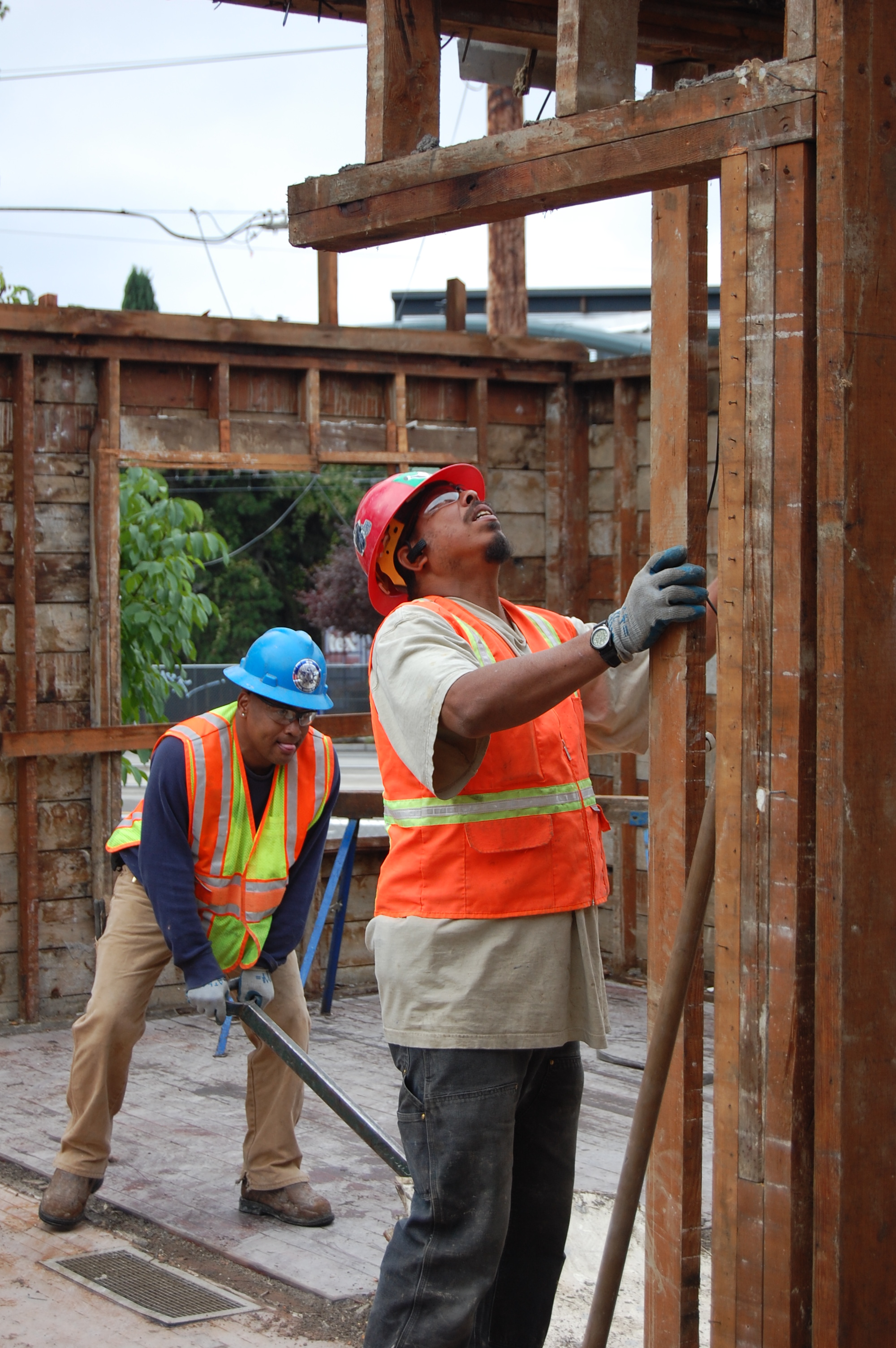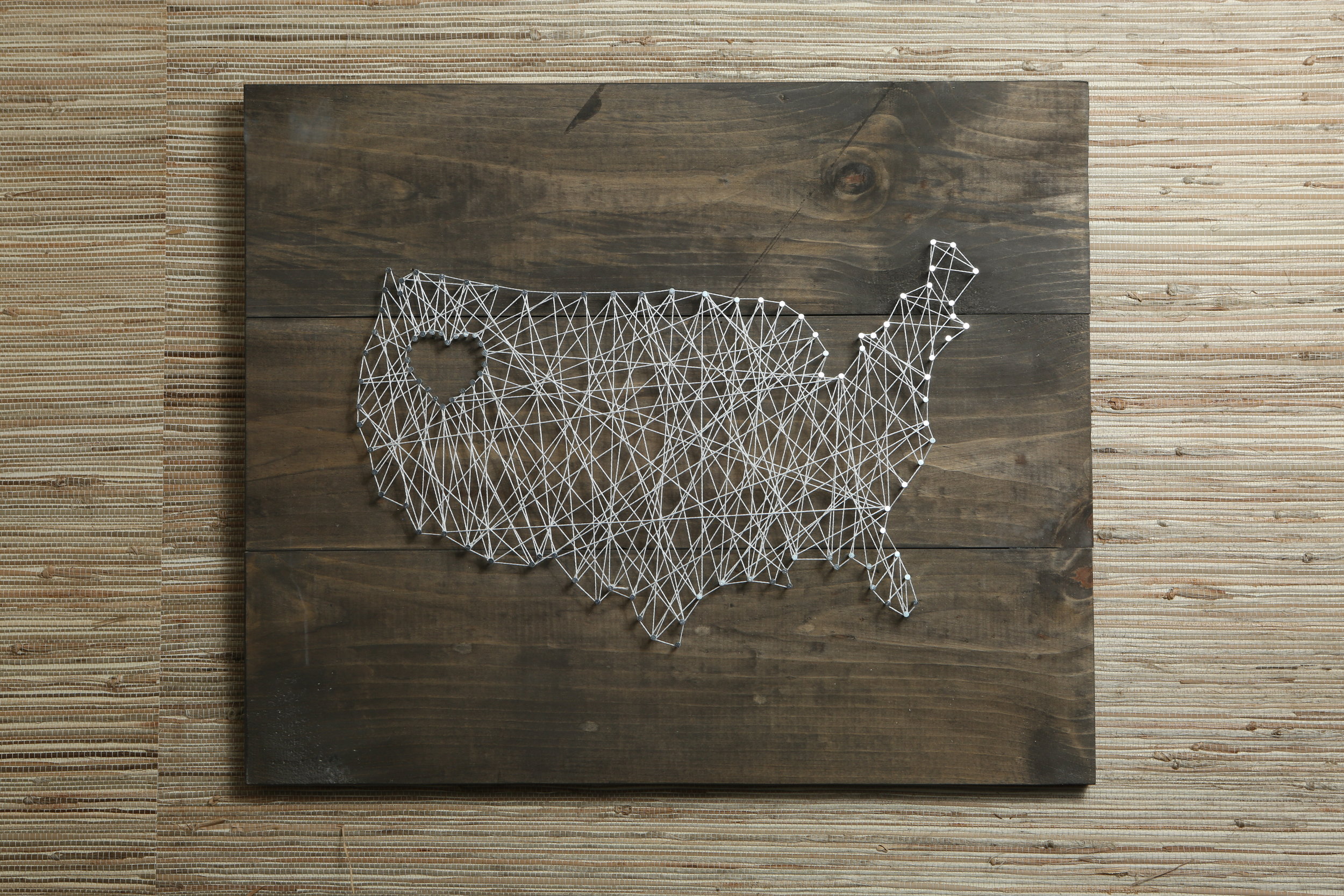ReBuilding Center is proud to collaborate with international educational groups like Northwest International Student Exchange (NWISE)! This year, we've teamed with NWISE, Oregon Food Bank, and Portland Parks and Recreation to welcome 11 interns from Germany as part of their Summer Homestay Program. Homestay students stay with local host families and volunteer their time in order to immerse themselves in American culture and the English language. Many of these students will go on to study abroad programs in U.S. Colleges and Universities. Meet the new interns here:
German interns introduce themselves
One month ago we landed in Portland, excited and curious about what we would experience, see, and feel during our three-month stay. We are a group of 11 students from a city called Marburg, near Frankfurt, Germany and will be working two days a week helping the organization.
The first few weeks were exciting—everything was new. We settled in with our families, homes, city and all the new activities. We learned a lot about what we can expect in the "Serve your Community" program we are participating in. On the first day at the ReBuilding Center, we got to know Dave [RBC Volunteer Services Manager] and the other employees. We felt comfortable within seconds and after a few days we got got into the groove at the ReBuilding Center.
Our work varies a lot. Some of us are helping Ashley [Marketing & Communications Manager] with the newsletter, others joined Tom in the Lumberyard. We also enjoyed working with the Portland Public School students that were building their own guitars in the wood shop. We've tried work in the tiles section as well as in the office. So far we are enjoying our stay and work here a lot and are looking forward to many great experiences!
Franca and Vivien
Franca
AGE: 14 years
IN MY FREE TIME I LIKE TO: hang out with friends, shopping
MY FAVORITE THING ABOUT PORTLAND: weirdness
MY FAVORITE THING ABOUT THE REBUILDING CENTER: working with the children
I DECIDED TO VOLUNTEER IN PORTLAND BECAUSE: I want to help other people
Vivien
AGE: 15 years
IN MY FREE TIME I LIKE TO: chill with friends, doing sports
MY FAVORITE THING ABOUT PORTLAND: downtown
MY FAVORITE THING ABOUT THE REBUILDING CENTER: working with Ashley
I DECIDED TO VOLUNTEER IN PORTLAND BECAUSE: I want to help people and create new experiences
Gordian, Jonathan, and Tom
Gordian
AGE: 16 years
IN MY FREE TIME I LIKE TO: eat
MY FAVORITE THING ABOUT PORTLAND: TriMet system
MY FAVORITE THING ABOUT THE REBUILDING CENTER: working with the "Tiles-Tom"
I DECIDED TO VOLUNTEER IN PORTLAND BECAUSE: I always want to meet new people
Jonathan
AGE: 16 years
IN MY FREE TIME I LIKE TO: play soccer
MY FAVORITE THING ABOUT PORTLAND: the ReBuilding Center
MY FAVORITE THING ABOUT THE REBUILDING CENTER: working in the tiles section
I DECIDED TO VOLUNTEER IN PORTLAND BECAUSE: I want to help people
from left to right: Tristan and David
Tristan
AGE: 16 years
IN MY FREE TIME I LIKE TO: do sports (especially in the gym)
MY FAVORITE THING ABOUT PORTLAND: no taxes
MY FAVORITE THING ABOUT THE REBUILDING CENTER: working with Tomas
I DECIDED TO VOLUNTEER IN PORTLAND BECAUSE: I want to do something I have never done before
David
AGE: 16 years
IN MY FREE TIME I LIKE TO: play American Football
MY FAVORITE THING ABOUT PORTLAND: the Trail Blazers
MY FAVORITE THING ABOUT THE REBUILDING CENTER: working in the woodshop
I DECIDED TO VOLUNTEER IN PORTLAND BECAUSE: volunteering is not that common in Germany and I want to try it
Carolin, Johanna, and Sina
Carolin
AGE: 15 years
IN MY FREE TIME I LIKE TO: play the guitar and piano and do gymnastics
MY FAVORITE THING ABOUT PORTLAND: nature (like Multnomah Falls)
MY FAVORITE THING ABOUT THE REBUILDING CENTER: working with the children in the shop
I DECIDED TO VOLUNTEER IN PORTLAND BECAUSE: I want to learn about the community and support them
Johanna
AGE: 15 years
IN MY FREE TIME I LIKE TO: play the guitar and do sports
MY FAVORITE THING ABOUT PORTLAND: the people
MY FAVORITE THING ABOUT THE REBUILDING CENTER: working with the children
I DECIDED TO VOLUNTEER IN PORTLAND BECAUSE: I want to do something new
Sina
AGE: 15 years
IN MY FREE TIME I LIKE TO: play the piano, do sports
MY FAVORITE THING ABOUT PORTLAND: downtown
MY FAVORITE THING ABOUT THE REBUILDING CENTER: sorting things, working in the shop
I DECIDED TO VOLUNTEER IN PORTLAND BECAUSE: I want to make new experiences and help people
Konradin
Aaron
Konradin
AGE: 16 years
IN MY FREE TIME I LIKE TO: read
MY FAVORITE THING ABOUT PORTLAND: the rain
MY FAVORITE THING ABOUT THE REBUILDING CENTER: Tom in the tiles section
I DECIDED TO VOLUNTEER IN PORTLAND BECAUSE: I want to do something different abroad other than going to school
Aaron
AGE: 16 years
IN MY FREE TIME I LIKE TO: code computers
MY FAVORITE THING ABOUT PORTLAND: downtown
MY FAVORITE THING ABOUT THE REBUILDING CENTER: the tiles section
I DECIDED TO VOLUNTEER IN PORTLAND BECAUSE: I want to help people
written by: Carolin Mauersberger, Sina Jeck, Johanna Kleinehanding
05/04/2017


























































































































